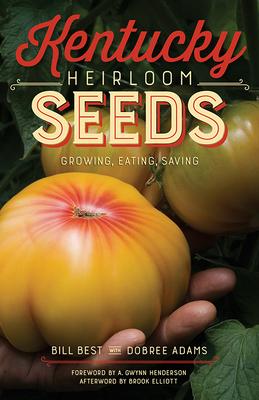Saving seeds to plant for next year's crop has been key to survival around the globe for millennia. However, the twentieth century witnessed a grand takeover of seed producers by multinational companies aiming to select varieties ideal for mechanical harvest, long-distance transportation, and long shelf life. With the rise of the Slow Food and farm-to-table movements in recent years, the farmers and home gardeners who have been quietly persisting in the age-old habit of conserving heirloom plants are finally receiving credit for their vital role in preserving both good taste and the world's rich food heritage.
Kentucky Heirloom Seeds: Growing, Eating, Saving is an evocative exploration of the seed saver's art and the practice of sustainable agriculture. Bill Best and Dobree Adams begin by tracing the roots of the tradition in the state to a 700-year-old Native American farming village in north central Kentucky. Although Best shares tips for planting and growing beans and describes his family's favorite varieties for the table, the heart of the book are the incredible interviews with seed savers, predominately from Eastern Kentucky and from generations of gardeners who saved seeds to feed their families. These people have worked tirelessly to preserve and share heirloom varieties. This book vividly documents the social relevance and historical significance of the rituals of sowing, cultivating, eating, saving, and sharing.
